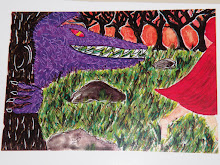The Little Match-Girl dies in the story. She dies “frozen to death.” She has used up her allotment of matches to engage in beautiful fantasies. This is how she has chosen to approach her state of need. There is the question of whether she really had a choice—there is the reality of difficult environmental conditions, and the truth that sometimes we are helpless—but we will consider that question later. Let us consider the inner state of helplessness.
We are told that when the Little Match-Girl “had left the house she had certainly had slippers on; but what use were they? They were very big slippers, and her mother had used them till then, so big were they. The little maid lost them as she slipped across the road where two carriages were rattling by, terribly fast. One slipper was not to be found again, and a boy had seized the other, and run away with it. He thought he could use it very well as a cradle, some day when he had children of his own. So now the little girl went with her little naked feet, which were quite red and blue with the cold.”
The Little Match-Girl is shoeless. What does it mean to be shoeless? It is difficult to move along (and get along) in life without shoes, shoes provide some protection in our contact with the ground. We come into contact with the ground through our feet. They are our anchors in the concrete world. Another way of saying this is that shoes aid our grounding in reality—“to walk shod is to take possession of the ground.” The Little Match-Girl has no shoes. The reality principle is disturbed, and this is in keeping with our overall theme that she engages in fantasy when her needs are unmet.
Symbolically, what do her mother’s “very big slippers” and the boy who steals her slippers suggest might be going on with her relationship to the ground?
Subscribe to:
Post Comments (Atom)

No comments:
Post a Comment